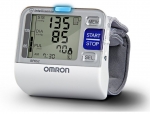Fascinating detail from an interview with cardiologist Haider Warraich on the history of high blood pressure,
When they first discovered blood pressure, physicians thought that high blood pressure was necessary for blood to reach the most remote or the most difficult-to-reach parts of the body.
It was actually the insurance companies who, in millions of their beneficiaries, are collecting data showing that high blood pressure was associated with more people dying. Yet, none of this information was ever followed by the scientific, the cardiology experts of their time.
It took almost decades of almost missionary zeal, not only from the insurance companies, but also from the researchers, to convince the established cardiology community that in fact treating high blood pressure was the right thing to do. Famous cardiologists like William Osler were almost militantly opposed to lowering blood pressure.
At one point, around the second World War, one in two Americans died of high blood pressure, but at that time the leading voices in cardiology actually felt that lowering blood pressure would do more harm than good. It wasn’t until the ’60s, ’70s, and ’80s when this mind-set was fully changed.
Wikipedia describes the history of high blood pressure in the 20th century thusly,
However, while the menace of severe or malignant hypertension was well recognised, the risks of more moderate elevations of blood pressure were uncertain and the benefits of treatment doubtful. Consequently, hypertension was often classified into “malignant” and “benign”. In 1931, John Hay, Professor of Medicine at Liverpool University, wrote that “there is some truth in the saying that the greatest danger to a man with a high blood pressure lies in its discovery, because then some fool is certain to try and reduce it”. This view was echoed in 1937 by US cardiologist Paul Dudley White, who suggested that “hypertension may be an important compensatory mechanism which should not be tampered with, even if we were certain that we could control it”. Charles Friedberg’s 1949 classic textbook “Diseases of the Heart”, stated that “people with ‘mild benign’ hypertension … [defined as blood pressures up to levels of 210/100 mm Hg] … need not be treated”. However, the tide of medical opinion was turning: it was increasingly recognised in the 1950s that “benign” hypertension was not harmless. Over the next decade increasing evidence accumulated from actuarial reports and longitudinal studies, such as the Framingham Heart Study, that “benign” hypertension increased death and cardiovascular disease, and that these risks increased in a graded manner with increasing blood pressure across the whole spectrum of population blood pressures. Subsequently, the National Institutes of Health also sponsored other population studies, which additionally showed that African Americans had a higher burden of hypertension and its complications.
